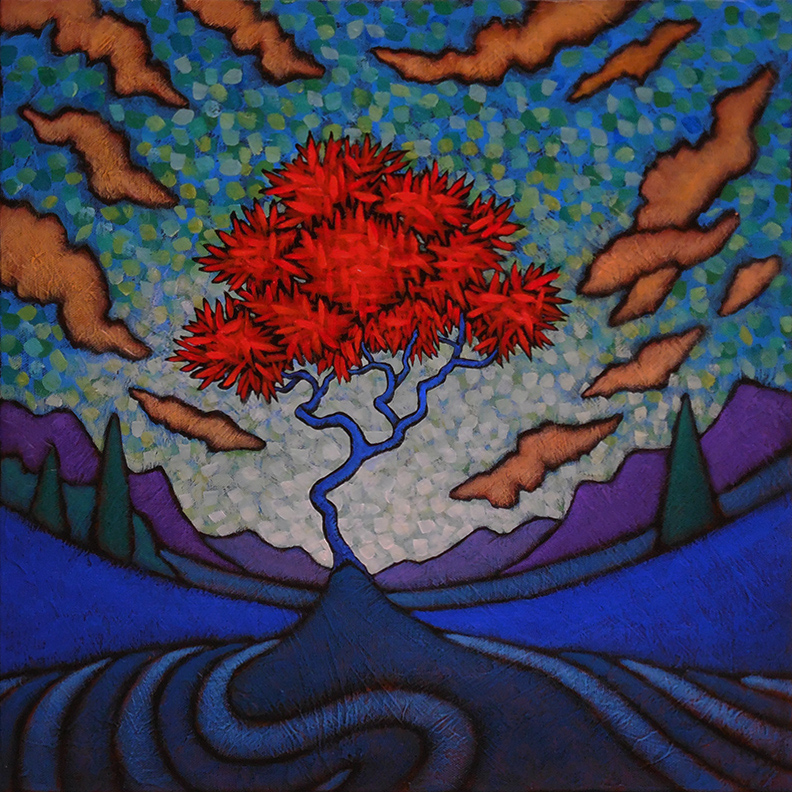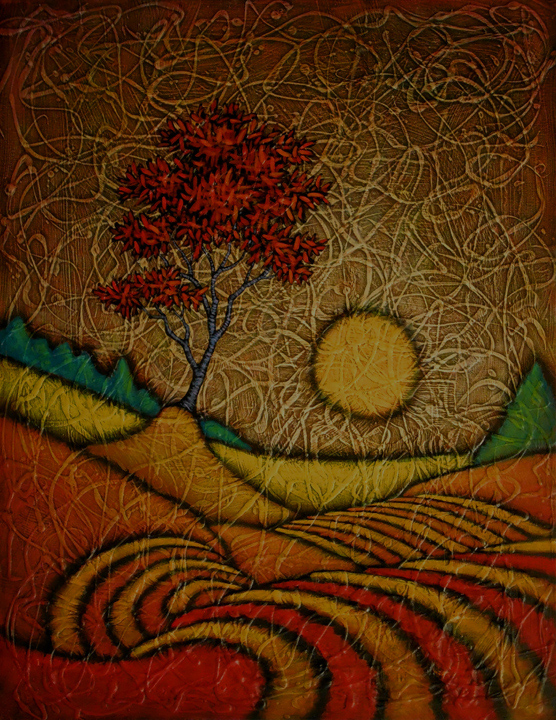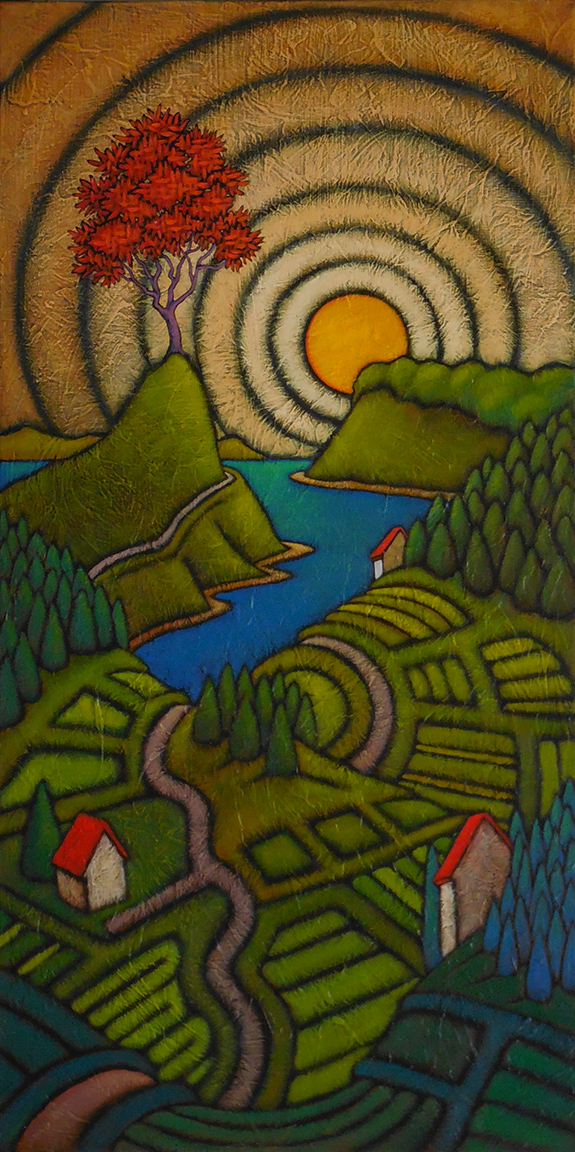
Held By the Moon-– Coming to Principle Gallery, June
But if you build your life on dreams it’s prudent to recall; a man with moonlight in his hands has nothing there at all.
—Miguel de Cervantes, Don Quixote de la Mancha (1605)
I wanted a quote or literary passage to open this post about the new painting above and came across the line above from Cervantes’ Don Quixote. It gave me great pause, not only for how I saw it in relating to this painting but in how it might have echoes in my own life.
I have built my life as an artist on the pursuit of dreams, in creating imaginary landscapes, in searching for impossible intangibles that I can’t define, describe, or explain. I seek that things that may not even exist.
Like Don Quixote, it sometimes appears that I might be tilting at windmills.
It makes me wonder if the wooden carved figure of Don Quixote that stands on a stone shelf above me now, given to me by my sister 50-some years ago, was an unconscious hint as to what was in store for me.
I don’t know how this makes me feel. There’s an aspect to it in which it is sad, much like the seeker who looks to hold the moonlight in their hands finding that they hold nothing at all. There are certainly days when it feels as though the years spent painting have left me with little more than that. But part of me is okay with this idea of appearing as some sort of mad knight on a misguided but chivalrous errand.
There are worst things to be in this world. Or in my imaginary world, for that matter.
I see this painting, Held By the Moon, as being much like Don Quixote. Like him, it has a romantic and larger than life feel to it, probably from the fact that it is a large painting, 48″ high by 36″ wide. The tens of thousands of brushstrokes that make up the sky represent for me the futility of holding on to moonlight.
It is there but then again, it is not.
You cannot hold it. But it certainly can hold you.
This painting, Held By the Moon, is part of Continuum: The Red Tree at 25, which opens at the Principle Gallery in Alexandria, VA on June 14, 2024. This show marks my 25th solo show at the Principle, a streak that began with my RedTree show in 2000.
I somehow have been holding on to the moonlight for a quarter of a century. Or so I believe…










